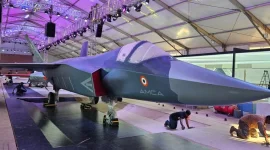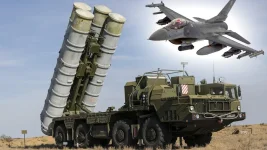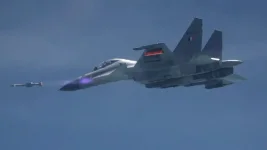- Views: 2K
- Replies: 18
In a major advancement for its indigenous defence sector, India is developing a new very long-range air-to-air missile named STAR.
Officially called the Supersonic Target Acquisition Rocket, this weapon is specifically designed to seek and destroy enemy Airborne Warning and Control Systems (AWACS), which are critical command-and-control aircraft.
The successful development of STAR will provide the Indian Air Force (IAF) with the crucial ability to engage and eliminate high-value aerial threats from extended distances, representing a significant leap in homegrown aerospace and defence technology.
The exceptional range and speed of the STAR missile are made possible by its advanced Liquid Fuel Ramjet (LFRJ) engine. Unlike conventional solid-fuel rockets that burn out quickly, a ramjet engine takes in air from the atmosphere as it flies, allowing it to maintain powerful, sustained thrust over great distances and achieve high supersonic speeds.
This capability is vital for hunting down targets like AWACS aircraft, which typically operate at high altitudes and far behind enemy lines to direct their own forces.
By neutralizing these "eyes in the sky," the STAR missile can disrupt an adversary's battlefield awareness and communication, giving the IAF a decisive tactical advantage.
The STAR missile has a modern, aerodynamic profile with a pointed nose cone that will house a sophisticated seeker for locking onto targets with high precision.
While official specifications are classified, the efficiency of its ramjet engine is expected to give it an operational range that could surpass 300 kilometers.
The missile's design also likely incorporates features to reduce its visibility to radar, increasing its chances of reaching its target without being detected and intercepted.
This project is a key part of India's "Make in India" initiative, aimed at achieving self-reliance in critical defence technologies. The Defence Research and Development Organisation (DRDO) is leading the effort, applying national advancements in propulsion systems, guidance technology, and material sciences.
The use of ramjet propulsion is in line with global military trends, seen in advanced missiles such as Europe's Meteor. However, the STAR is being custom-built to address India’s specific security challenges, where neutralising enemy AWACS platforms is a strategic priority.
Once operational, the STAR missile is slated for integration with the IAF's premier combat aircraft, including the Sukhoi Su-30 MKI, Rafale, and the indigenous Tejas fighter jet.
Its extreme range will significantly enhance India's layered air defence network, complementing other Indian-made Beyond Visual Range (BVR) missiles like the Astra series.
Although the STAR missile is currently in the final stages of development, its progress is a strong indicator of India's maturing capabilities in designing advanced weapon systems.
When deployed, it will not only substantially boost the IAF's air combat strength but also signal India's emergence as a creator of cutting-edge defence solutions, with future potential for exporting such technologies.
The STAR missile stands as a clear example of India's commitment to securing its airspace with domestically developed technology.



